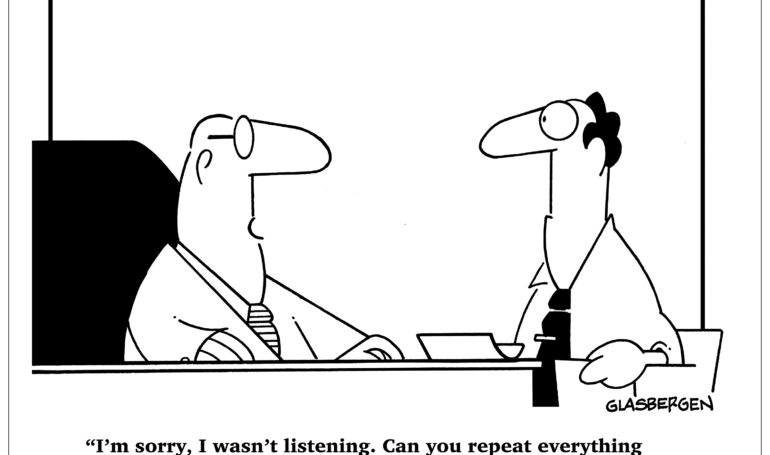
What You Need to Know About Selective Listening in 5 Minutes
Why do people hear what they want to hear and leave the rest? Why does selective listening happen and how can we lead and manage through it? This question, almost as profound as which came first — the chicken or the egg, plagues us all. This phenomenon is particularity perplexing to those of us who lead and manage others. The result is we focus on a CYA (cover your ass) mentality, which interestingly enough still leaves holes. Equally confounding is the lack of a pattern or predictability to selective listening. The confusion usually comes out of the blue sky without warning. What I’ve learned is that even with my professional radar, I still get surprised by who didn’t hear what and when they choose to mention it. As a result one of my signature phrases is: “It’s never what you expect that actually gets you”. Monty Python nailed it; “No one expects the Spanish Inquisition”.
When selective listening happens, I recommend:
1. Act Quickly
Letting it fester is the worst approach to take. Akin to freezing and looking like a deer in the headlights. This is an opportunity for you to showcase your humility while using your strong leadership skills to get to the root of the issue. In these situations, it’s never black or white. There is a big gray area, that will continue to grow without your action. Check out the 4-Fs in Managing Annoying People.
2. Do a Jessica Fletcher Timeline
If you don’t know who Jessica Fletcher is, Google immediately. Star of Murder, She Wrote, J.B. Fletcher, international best selling mystery novelist always starts with creating a time line. Who was where? When did it begin? When did it really begin? What evidence exists… emails, texts, pictures, voice mails, documentation, meeting notes. You get the idea, let’s just hope it doesn’t boil down to crime scene photos like J.B. has to deal with.
3. Label It To Discuss It – Selective Listening
If you can’t categorize it or name it, you cannot discuss it. Use phrases such as “we have a case of misunderstanding” or “he-said; she-said” or “old-fashioned telephone” (often that has to be explained to millennials). Feel free to use my favorite: “we’re not on the same page literally”. By the same token, you do not have to immediately fix it. By labeling it, you demonstrate that you understand there is an issue and you are working to resolve it.
4. Stand in the Selective Listener’s Shoes
In the light of day, this can be incredibly powerful. Owning up to our own responsibility when someone else hears what they want to hear takes practice and a lot of work. Sometimes we are not as clear and concise as we think. Or even if we are thorough and have it all documented, it is possible it can be misconstrued. Moreover as we stand in their shoes, we see they may have been acting on old information or as it happened previously. Their shoes maybe painful and hurt to walk in. Perhaps they are going through tough economic times, a health scare or relationship troubles. Others may have a vested interest in not hearing the information because it doesn’t make sense in their world right now. They need it to be the way it makes sense to them. Those with selective listening cannot see anything else at this time.
5. When Possible Find a Graceful Exit
The goal is not to be right. As a matter of fact, it is to have the right outcome. The outcome that will not weaken policy and procedures. The solution that treats same people in the same circumstances in the same manner. The resolution that leaves the relationship in tact without compromising principles or setting an unwanted precedent. Again, easier said than done. Remaining cognizant of what a graceful exit actually looks like will increase the likelihood that you will achieve a graceful exit.
What’s Next:
Remember, it’s not you. It happens to everyone. Be as clear as you can moving forward. Ask for feedback on what people heard you say. Keep your cool, deal with it head on and make a graceful exit.
